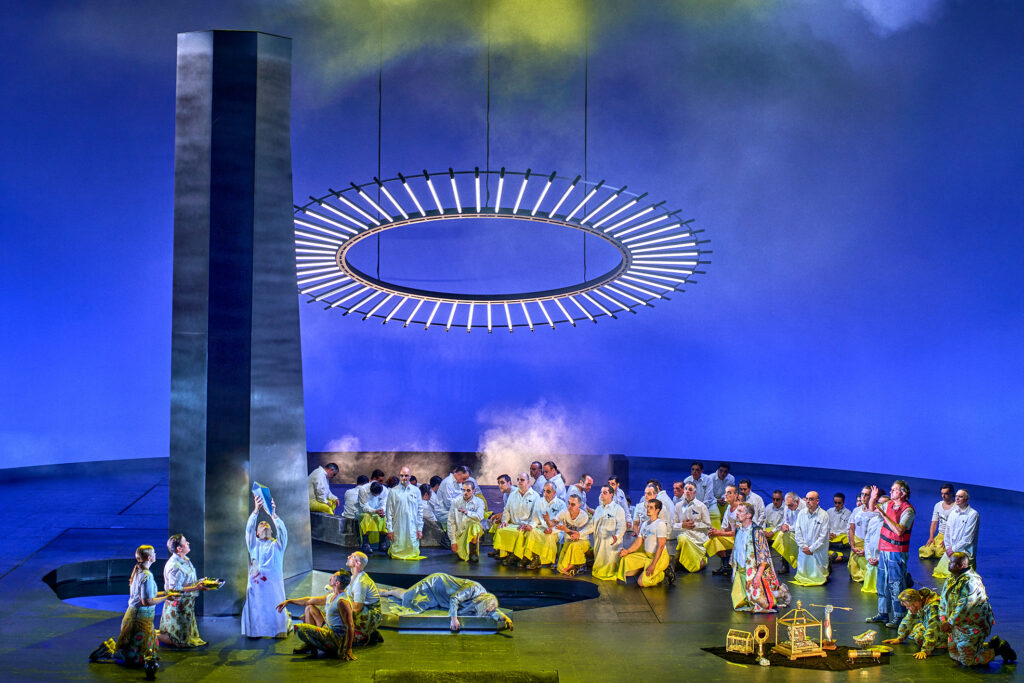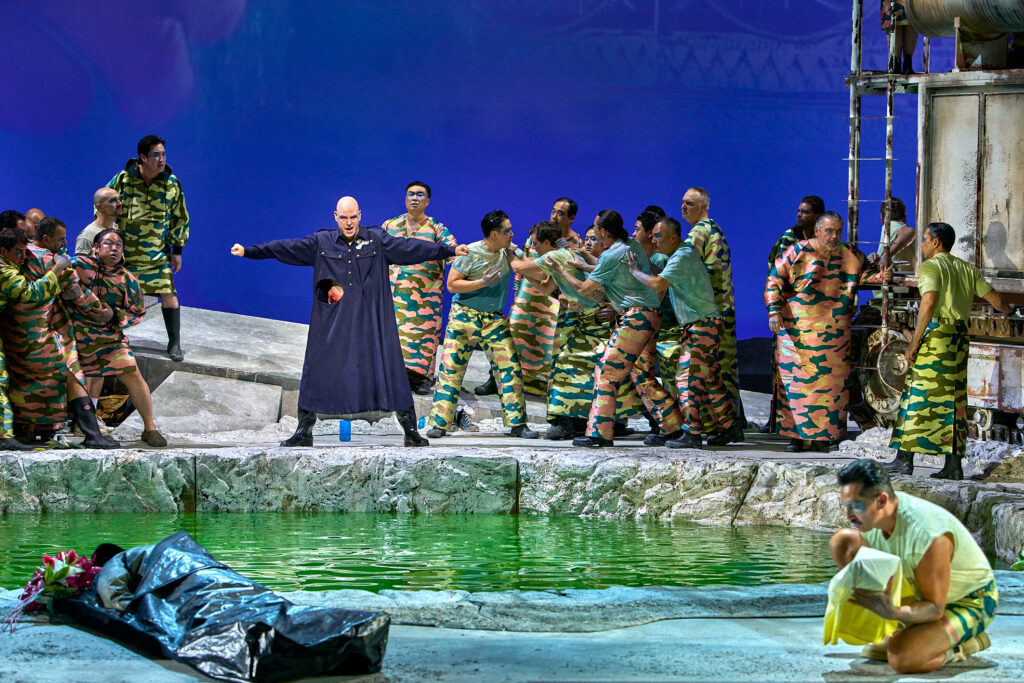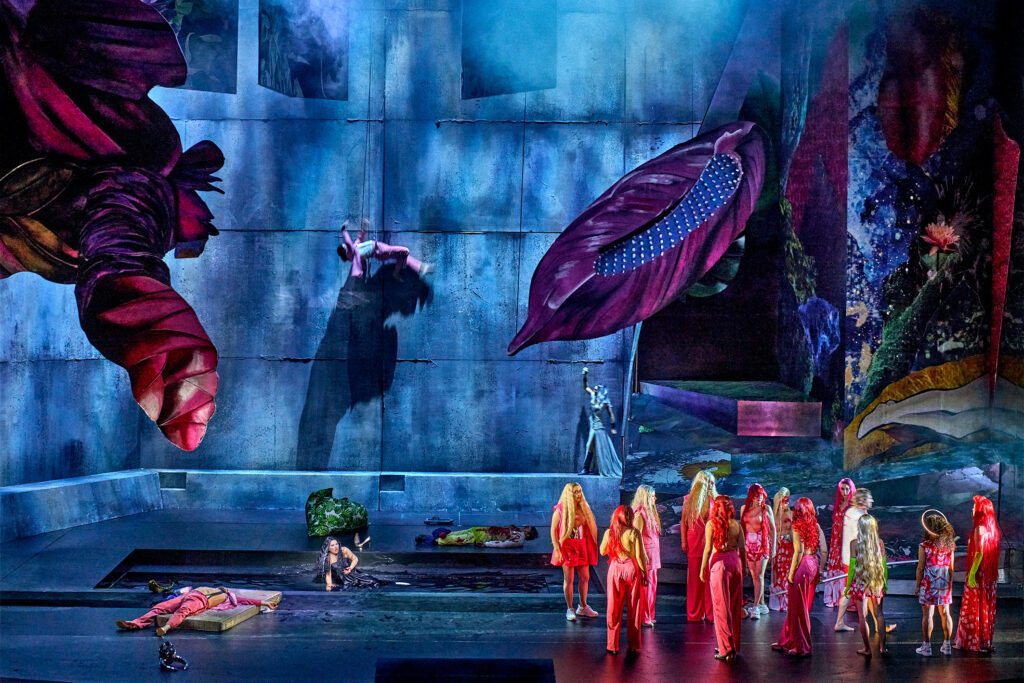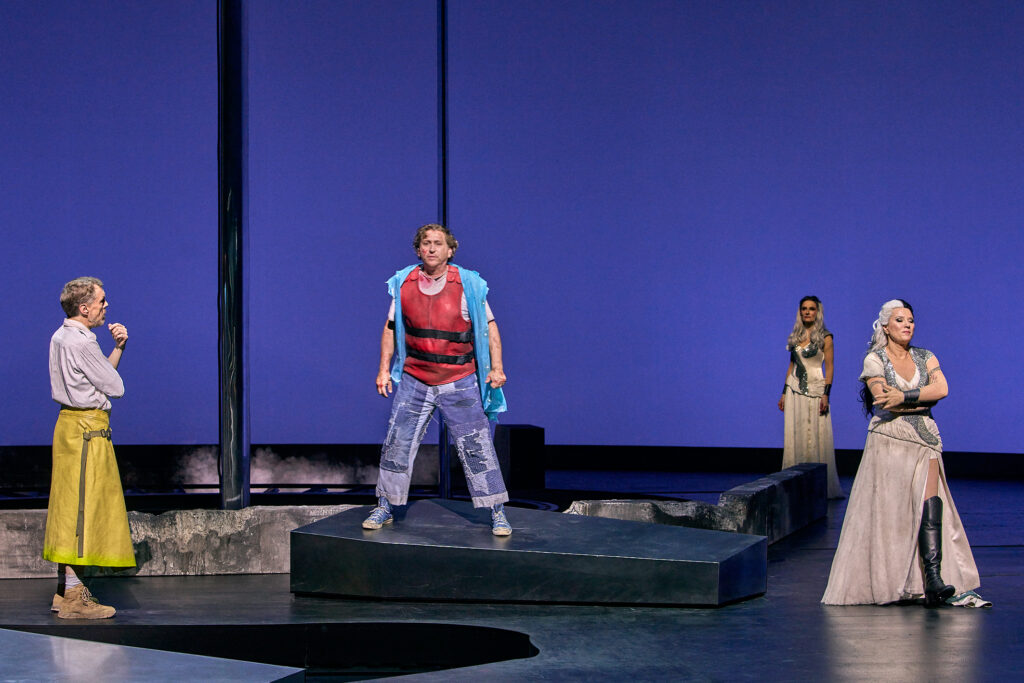In its second year at the Bayreuth Festival, Jay Scheib’s ‘Augmented Reality (AR)’ production presents itself to some viewers as more in-depth and sharper from a musical and staging perspective. The AR animations do not always seem innovative or forward-thinking throughout.
After all, it has been the declared aim since the US director was hired to raise ‘Parsifal’ into new spheres using the latest technology. Due to the high cost of the glasses, however, the number of glasses was unfortunately reduced right at the beginning of Scheib’s engagement. And even for this year, it has not been possible to (or want to?) increase the number of spectacle seats. Last year was already a missed opportunity to show the innovative potential of this technology to all spectators.
And now? Surprisingly, Scheib has hardly reworked the AR animations for his revival, especially with regard to their innovative potential. And this despite the fact that the possibilities of technical progress were still advancing rapidly last year. As a result, some of the animations already seem a little outdated in their second year.
Right at the beginning, to the solemn spherical sounds of the prelude, the AR viewer is impressively drawn into the world of swirling stars in total darkness. The spear flying towards each individual in the second act seems predictable, while the space that expands downwards in the third act, like a rocky coastal landscape on which foxes and lambs leap about, casts a spell.

Kalashnikovs, hand grenades, broken batteries and people with spears and wounds in their stomachs beautifully and comprehensibly illustrate the director’s idea of the conflicts and wars that follow the exploitation of the environment and nature with its rare earths and crystals for mobile phone and battery production. In the end, the human-amphibians are camped around a pond with water that is no longer particularly pure, but contaminated by the mining of minerals. The stage design by Mimi Lien in unusual colours between a pink Klingsor world with magical girls from Barbieland and a Grail world in blue and yellow with amphibian robes (costumes by Meentje Nielsen) is new and innovative because it has not (yet) been used in this way in other productions.
The other AR elements, such as flowers, books and butterflies, often only appear as illustrations that take away from the sharpened scenery on stage. Scheib has found clearer characterisation and new representations here: When Klingsor hurls the spear at Parsifal, Kundry throws herself in between.
Finally, the Grail shatters as a large blue crystal, deliberately thrown to the ground by Parsifal. Man must now live with the nature he has destroyed. How can this work? Parsifal takes Kundry by the hand at the end and climbs into the contaminated pool. Will a new utopia follow? Is it final destruction or the start of something new? That remains open and leaves us perplexed.

Ekaterina Gubanova gives Kundry a beguiling depth of character, and one could immediately understand that Parsifal could be seduced after all. This creates a wonderfully crackling tension throughout the second act. Her warm, full mezzo sounds beautiful, round and soulful, and thus also musically conveys the despair, melancholy and weariness of her character. Only the clarity of the text could be adjusted a little.

Andreas Schager ‘s Parsifal is indestructible. He virtually screams Amfortas’ lamentation from his soul, even though he knows how to come up with good intelligibility. Otherwise, he masters the role with a great deal of naturalness and straightforwardness, which suits the ‘pure Thor’ well.
Jordan Shanahan gives a Klingsor with radiant expression and great focus, while Derek Walton ‘s Amfortas could have brought a little more lament and expression to his otherwise expressively sung tenor on this evening. Tobias Kehrer‘s Titurel was convincing with a clear, flowing and expressive intonation.

Even if Georg Zeppenfeld is not quite able to match his best performances on this revival day, his portrayal of Gurnemanz is nevertheless of exceptional quality. His bass is nuanced and knows how to create tension throughout the long narratives through clear articulation. The solemn joy of the returned spear radiates character-deep into the hall. A goosebump moment, even if Pablo Heras-Casado in the pit in the third act cannot quite match the nuanced and exciting interpretation of the score up to that point.
The orchestra had played out the first act in a differentiated manner at fast tempi. Heras-Casado’s approach of playing tightly, swiftly and less pathetically is very convincing. It is singer-friendly and nuanced and balanced for the acoustics of the Festspielhaus. He also manages to shape the second act with a clear, precise and flowing lightness, while in the third act the tension and pressure drop off somewhat. All in all, an equally well honed musical interpretation of the ‘world farewell work’ is on the credit side of this production.
The choirs, conducted by Eberhard Friedrich, provide a haunting plasticity in a grippingly harmonious whole. The flower girls, knights of the Grail and squires complete a cast of overall high quality.
A few boos for the production team and lots of applause for the conducting and singers.